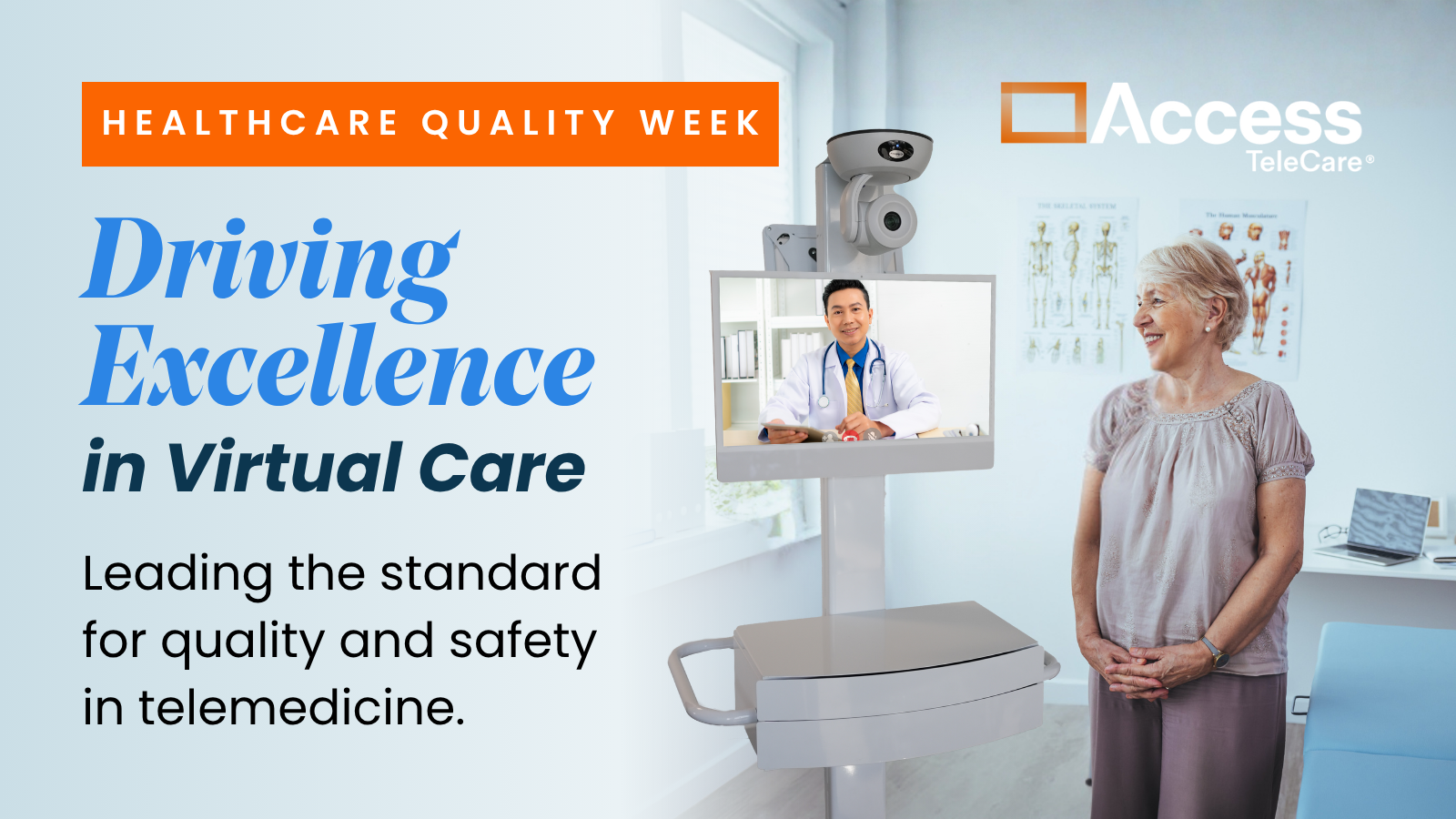By Dr. Jason Hallock
Few topics have gripped the nation and the world in recent times as has the COVID-19, or coronavirus, pandemic. While it’s certainly a serious problem, we currently don’t know all the factors surrounding transmission and its effects on patients. It’s also important to keep it in perspective and even to see a positive side. In fact, we’re seeing telemedicine serving as an effective infection control policy, keeping both healthcare providers and patients safer from coronavirus. It can help isolate patients by evaluating them and, in some cases, treating them remotely. And it can be used in the hospital setting to minimize in-person contact of clinical staff with patients.
Telemedicine Stands Ready for Its New Role: Capacity Management
The healthcare industry has been anticipating something like this for a long time, and this is the time that telemedicine can actually start to help. It’s not something that’s an experiment or in its infancy, it’s here. In the hospital setting, there are specialized pieces of equipment that allow comprehensive evaluations of patients like stethoscopes to examine the heart or lungs and high quality cameras.
But just about everyone has the most basic technology of a device to access telehealth: a mobile phone or a computer with a camera. Patients have access from their homes, and what they need may not be the cutting edge of what’s been built, especially if they aren’t very sick. This could even take the form of more basic technologies and even being able to talk to the doctor remotely on the phone might suffice in some scenarios.
A March 4 Wall Street Journal article, “Hospitals Use Telemedicine to Minimize Contact With Virus Patients,” addresses this increased interest in telemedicine to limit the spread of the coronavirus:
The Centers for Disease Control and Prevention has urged doctors and hospitals to first assess potentially infected patients remotely. The agency is also suggesting that patients with mild symptoms from COVID-19 can be cared for at home when possible, but monitored closely using virtual check-ins.
The article also noted that people are using telemedicine for other medical needs to avoid going to a hospital or clinic where they might come in contact with someone with the coronavirus.
Our Healthcare System Is Well Prepared for an Infectious Disease Epidemic
The number of patients that have contracted the coronavirus that are symptomatic or sick at this point is not going to break the system. We don’t know where it’s going, but there are 5,000 hospitals in the country. They’ve all been prepared for infectious diseases. They all have disaster plans and capacity management plans, and they practice those regularly.
When it became truly real for hospitals in the last 20 years was during the SARS crisis in 2002 and the Ebola crisis in 2014. The concept of keeping the not-sick or not-very-sick patients out of the hospital and away from the hospital is one lesson: Help contain the spread of the disease by not having people in a crowded waiting room where the non-sick can catch it. Directing these people to the right setting of care if they need to leave the home is going to be a great use for telemedicine.
With the coronavirus, telemedicine’s biggest role may be in capacity management for our healthcare system. For the public that may be isolated at home, it gives them access to medical advice and treatment without putting an additional burden on the hospitals. In the hospital, it’s going to help us care for them in a safe manner that doesn’t take too many healthcare workers out of the mix because they contract the disease and won’t be able to work. Clearly there is a fear level among all healthcare workers simply because there have been deaths with this disease, including a few younger doctors in China who were working with the infected patients.
Also, when we talk about capacity management, it’s not only the volume of patients, but it’s about the protocol. If patients are confirmed positive for coronavirus, hospitals have to use their maximum respiratory protocol. You’ve got to put the patients in a negative-pressure isolation room, of which hospitals only have one or two or a handful. Clinicians have to put on protective equipment before going into the room. This means that the they have to don a sealed respiratory system that includes a hood and body gear. It takes a couple of people to help put it on and take it off. The result is it can take three times longer to make a simple patient visit. Telemedicine can take a lot of that out of the equation, which frees doctors and other staff to care for other patients.
Thoughts on the Current Coronavirus
There’s a lot of fear of the unknown with this pandemic. It is serious. There are unknowns about where it’s going. But the truth is, as we get more information, that probably it’s been around longer than we fully know, and maybe more people have been exposed or had it than we truly know. We’re finding that the severe infections and those that are very symptomatic are fewer than we first thought in the early days of the disease.
The CDC has made a big point about this, but I can’t stress it enough that there are millions of people affected by seasonal flu every year, a large number are very symptomatic, and there are tens of thousands of deaths every year in the U.S. In fact, here are the numbers from the CDC’s report as of February 29 this year: At least 34 million flu illnesses, 350,000 hospitalizations, and 20,000 deaths from the flu. Yet only somewhere around half of adults get a flu shot.
There’s a disproportionate fear of this unknown versus things that we know can be very serious, like regular influenza. We need to take common sense steps to protect ourselves: hand-washing, not congregating in areas where we pass the virus, not touching our faces, cleaning surfaces, and, at least until we know what’s happening with the coronavirus, not shaking hands. These basic infection control policies are really going to be what helps us the most.
Telemedicine Offers Huge Opportunities for Limiting Coronavirus Spread but Still Has Limits
Many hospitals have telemedicine capabilities now. Smaller hospitals are likely to have processes in place to deal with specific uses where they have the biggest need for specialists that they don’t have on staff. Two areas that are the most common for small hospitals are acute stroke care and emergency psychiatry. Those are the two biggest use cases that have brought specialists in contact with patients in hospitals, but that can be easily transported to other uses or expanded upon.
One of the great things about acute telemedicine, which is what we do at SOC Telemed, is that we can free up the emergency rooms from being overcrowded with other patients because they have quicker and better access to specialists for acute teleNeurology and telePsychiatry care.
The question is how many end points do they have to be able to access how many patients? Most hospitals may only have one or a couple of functioning carts or technologies to access the patients. If they use this technology to access patients in an infectious disease setting, they are no longer available for their primary uses. You can’t be working on a coronavirus patient and then necessarily immediately pivot to care for a stroke patient. Right now, I would say there’s a limitation based on the end points that allow providers to care for patients.
Even bigger systems will have more established programs in place, but they still may not have a lot of end points. We don’t know what the number of patients is going to be, where we’re going to want to potentially use this technology. That’s still and unknown for all of us.
COVID-19 May Spur Healthcare Systems to Expand Telemedicine Capabilities
Everyone absolutely sees that through an infectious disease pandemic, we’re going to learn how to work smarter and safer than we ever have been able to before with our current capabilities. And, as we expand those current capabilities, it’s going to really change the face of how we approach thinking about containing and treating any widespread infectious disease.
R. Jason Hallock, MD, MMM, is Chief Medical Officer at Access TeleCare. Dr. Hallock leads management of clinical and administrative strategy, ensuring that top-rated medical standards are met across all clinical specialties. Dr. Hallock is a strategic clinical and operational leader with more than 20 years of experience within some of the nation’s most highly developed clinically integrated networks. With complementary business and medical degrees, Dr. Hallock is adept at driving alignment of clinical and administrative objectives to produce optimal results in quality, safety, and efficiency. Dr. Hallock has a Master of Medical Management (M.M.M.) from the University of Southern California and an M.D. from the University of Connecticut.









